At end of spring and start of summer, garden buzzes with harvest of soft fruits. Among them, the redcurrant bushes reveal their round, juicy berries with a tangy flavour. Whether from gooseberry bushes or redcurrant bushes, currants are eaten fresh, as accompaniment to savoury dishes (meat, fish, sauces…) or sweet dishes (cakes, jams, sorbets...). And to change from traditional redcurrant jellies and other tasty tarts, why not make a delicious syrup? Discover our easy homemade redcurrant syrup recipe.
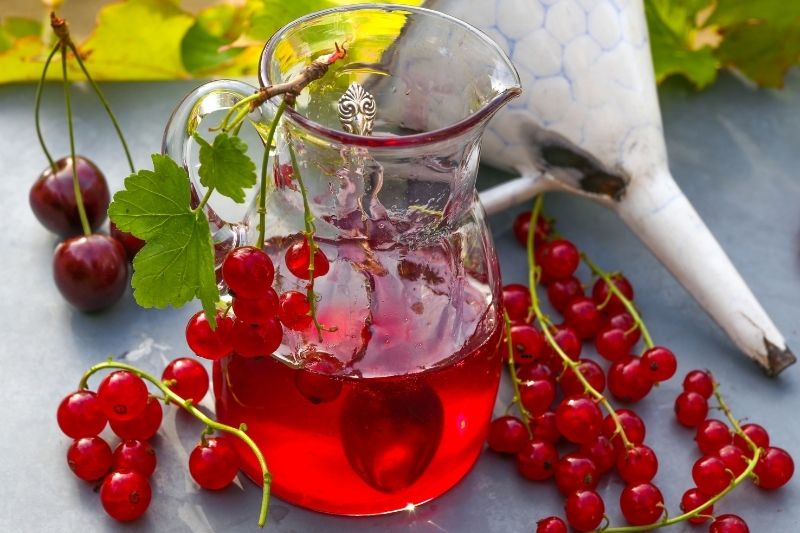
A delicious redcurrant syrup to flavour drinks and pastries
When, how and where to harvest currants?
Harvest of currants takes place mainly between June and August, depending on variety. Pick preferably in morning or late afternoon, when no rain is forecast. These small fruits are harvested when ripe, when they come away easily from their cluster or branch. You can remove them one by one by hand or pick whole clusters. After picking, rinse currants if necessary under a cold tap.
Currants do not always ripen at same time and keep for only about one week in refrigerator. Consequently, it is not always easy to gather enough fruit in a single picking. To overcome this, freeze them bit by bit as you pick.
Tip: to preserve flavour and texture of currants, chill for one hour in refrigerator before freezing.
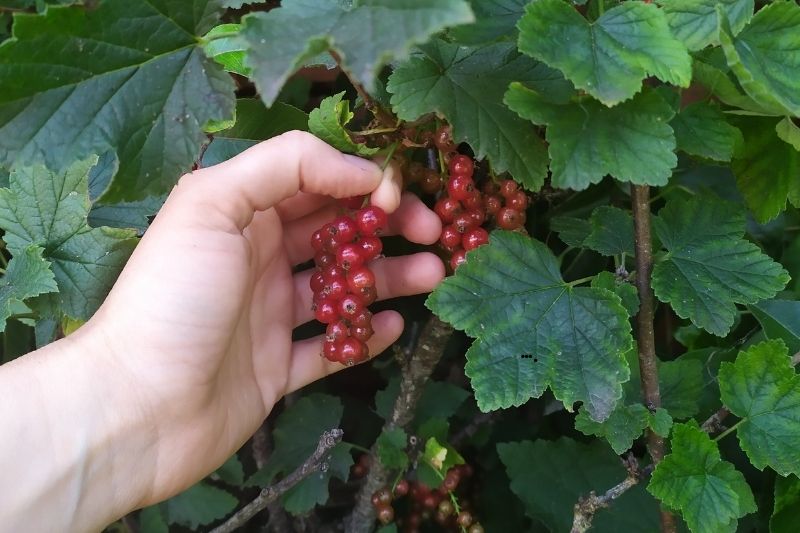
Harvesting redcurrant clusters is mainly done by hand
Which currant variety to choose?
Family Grossulariaceae includes more than 200 species, including currant-bearing plants. Best known are redcurrant bushes, recognisable by their small red fruits gathered in clusters. Blackcurrant (Ribes nigrum) belongs to same family but bears black fruits. There is also the Currant-Grape, later and with long peduncles easy to pick. The gooseberry bush produces larger fruits and the cassis-berry is a cross between blackcurrant and redcurrant.
In terms of productivity, gooseberry bush typically yields 3 to 4 kg per mature plant, redcurrant bush gives about 3 kg of fruit and Currant-Grape 8 to 10 kg. For a pretty redcolour syrup, select mainly red fruits for their colour.
Among these varieties, here is a small (but tasty) selection:
- The Redcurrant bush 'Rolan' is a redcurrant variety, self-fertile and very disease-resistant. It produces long clusters of fruit with a balanced sweet-tart flavour.
- The Redcurrant bush 'Jonkheer van Tets' is valued for good productivity and earliness. Self-fertile, it yields long clusters of small red fruits. Good hardiness allows it to adapt to regions with cold winters.
- The Currant-Grape 'Agate Rouge' is a late, self-fertile redcurrant variety. It offers long clusters of small red berries, easy to harvest.
- The Gooseberry bush 'Captivator' stands out for its large, juicy, sweet gooseberries, not overly tart, good for eating fresh or cooking. It is also early, self-fertile and without thorns.
→ Find all our redcurrant varieties.
→ Also discover our buying guide: "choosing redcurrant bush: buying guide"
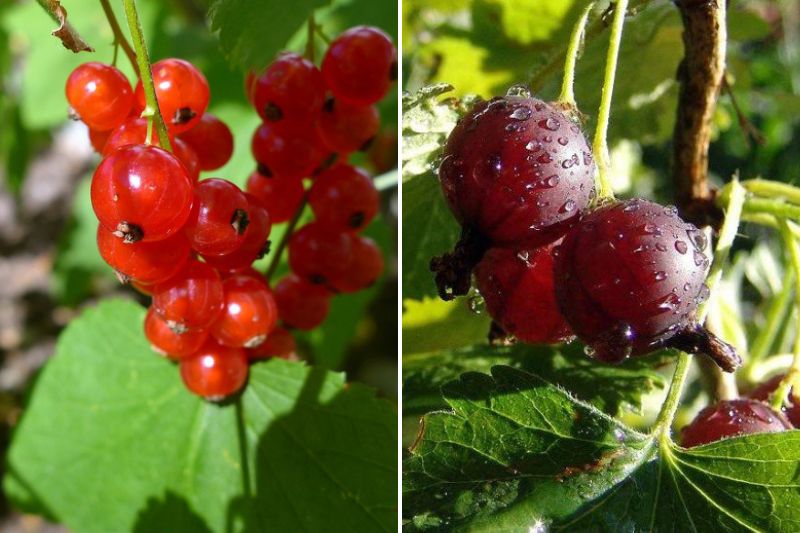
Fruits of Redcurrant bush 'Jonkheer van Tets' and Gooseberry bush 'Captivator'
Homemade redcurrant syrup recipe
Ingredients :
To make 50 cl of redcurrant syrup, you will need:
- 500 g fresh currants
- 250 g white sugar or cane sugar
- 250 cl water
- Facultative: half organic lemon or 5 cl lemon juice to improve preservation
- a saucepan
- a fine-mesh sieve (chinois or tamis) or a clean cloth
- a wooden spoon
- a sterilised bottle (or jam jar)
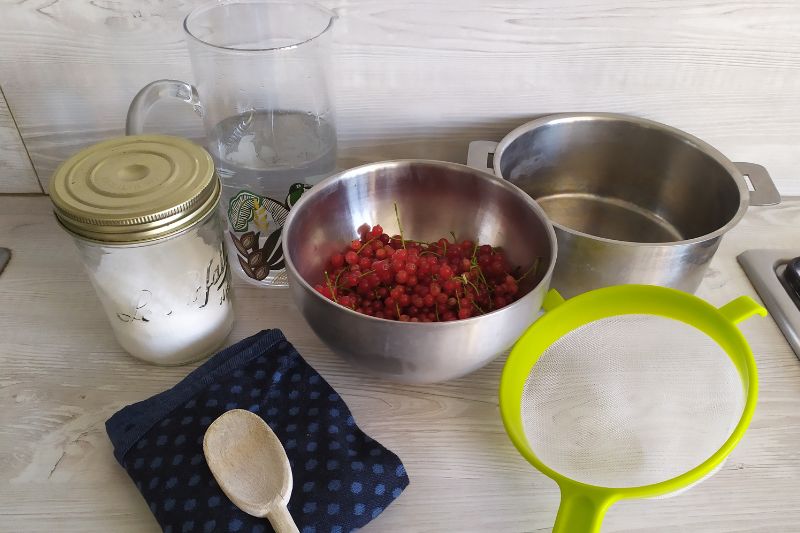
Sugar, water, a saucepan, a fine-mesh sieve and fresh berries from the garden. Ready for the redcurrant syrup recipe!
Recipe :
Before starting: sterilise container (bottle, jars…) before beginning.
- 1/ Rinse currants under cold tap water and drain well. For this recipe, there is no need to remove stalks from berries. Remove however damaged fruit and leaves.
- 2/ Place currants in saucepan.
- 3/ Pour in water and bring to the boil.
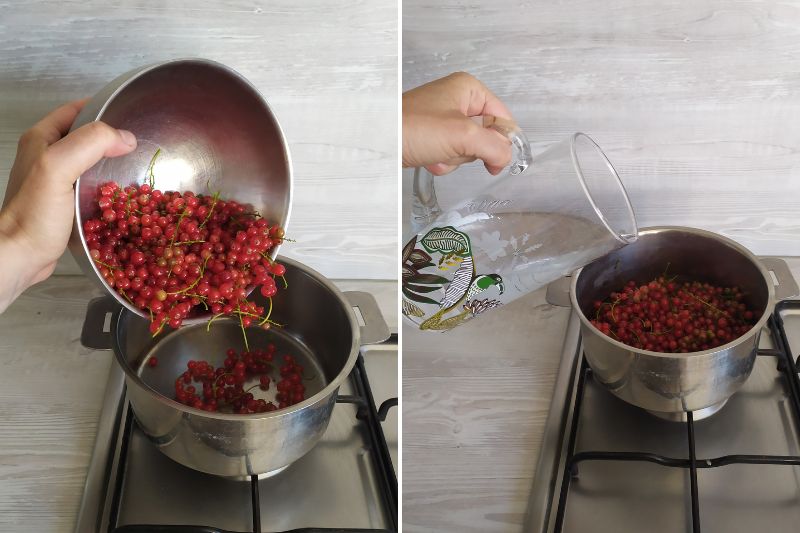
Pour berries into saucepan, then add water and heat
- 4/ Simmer for 10 minutes over low heat. Stir occasionally. At end of cooking, crush fruit with wooden spoon.
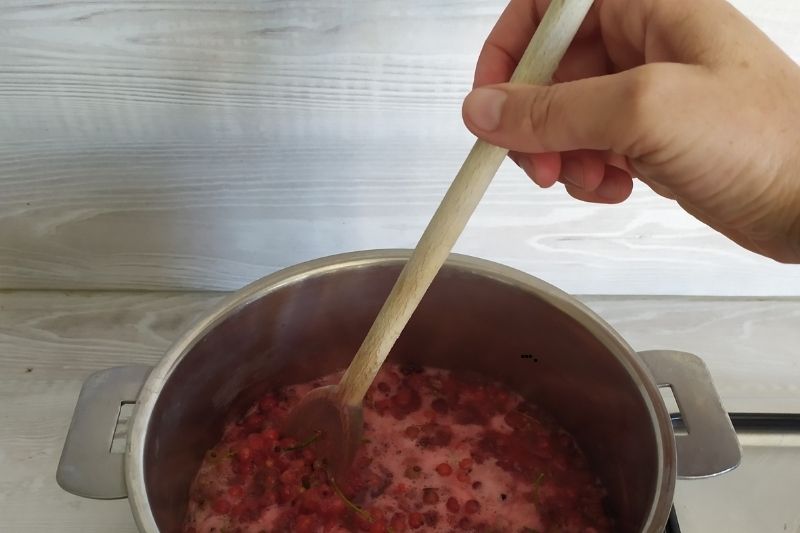
Stir occasionally, crushing fruit with spoon towards end of cooking.
- 5/ Strain mixture through fine-mesh sieve or clean cloth. Press fruit to extract all juice into a container.
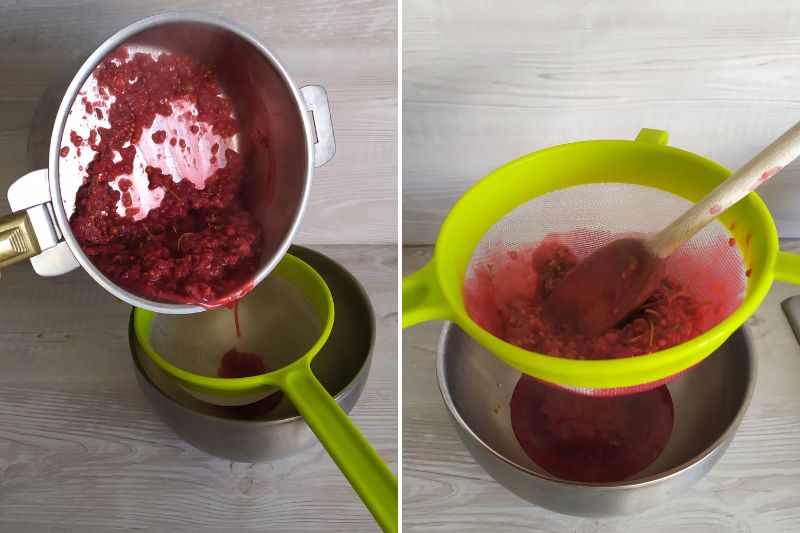
Strain preparation. Be sure to press small fruits with a spoon to recover the juice
- 6/ Pour obtained juice back into saucepan and place on heat
- 7/ Then add sugar and lemon juice.
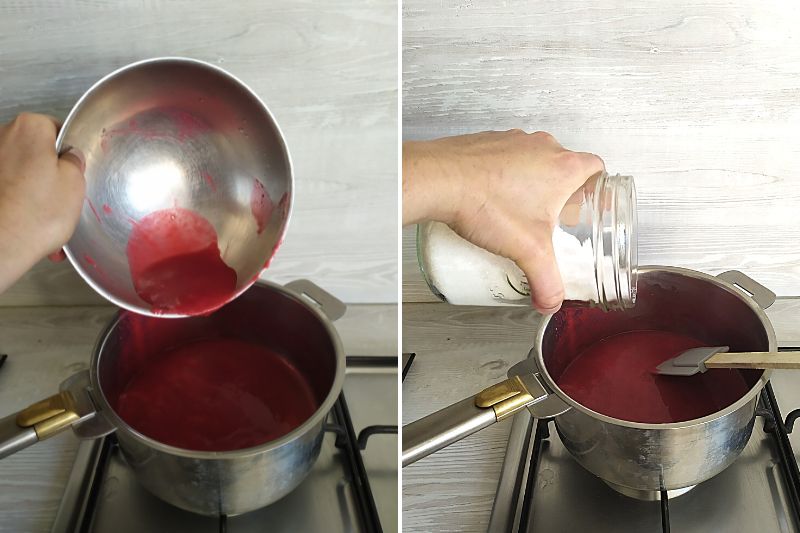
Return juice to saucepan, add sugar, lemon juice and simmer for 10 minutes
- 8/ Cook for 8 to 10 minutes over low heat, stirring regularly. Careful! If cooking time is too long, you will obtain a delicious redcurrant jelly! That would be a shame for your syrup, but perfect for breakfast toast.
- 9/ Without letting cool, pour syrup immediately into sterilised bottle or jar.
Tip: you can also make a mixed red-berry syrup by adding blackberries, raspberries, blackcurrants, strawberries, cherries and blueberries.
How long does redcurrant syrup keep?
Your redcurrant syrup will keep for 15 days to 1 month in refrigerator.
Recipe ideas:
- Redcurrant syrup is perfect to flavour drinks. Pour 1 to 2 tablespoons into a glass of still or sparkling water, add ice cubes, stir and enjoy! Garnish with a few fresh currants and mint leaves.
- Syrup can also be used in cocktail preparation or simply with orange juice.
- It is also perfect as coulis to elevate desserts and crumbles, ice creams and sorbets, cakes and tarts, pancakes and waffles, biscuits and yoghurt.
To go further :
- Find all our redcurrant varieties.
- For everything you need to know, read our full sheet on redcurrant bush: planting, pruning and care






























![[plant] "currant" syrup [plant]currants syrup](https://en.promessedefleurs.eu/blogwp/wp-content/uploads/2022/07/faire-sirop-groseilles.jpg)
Comments